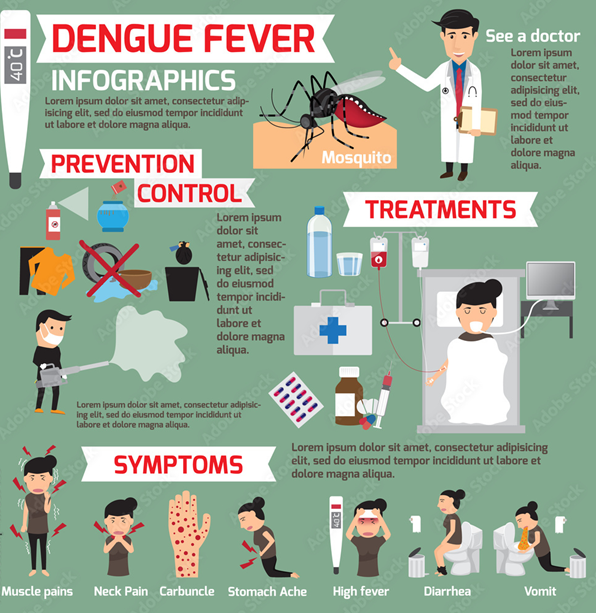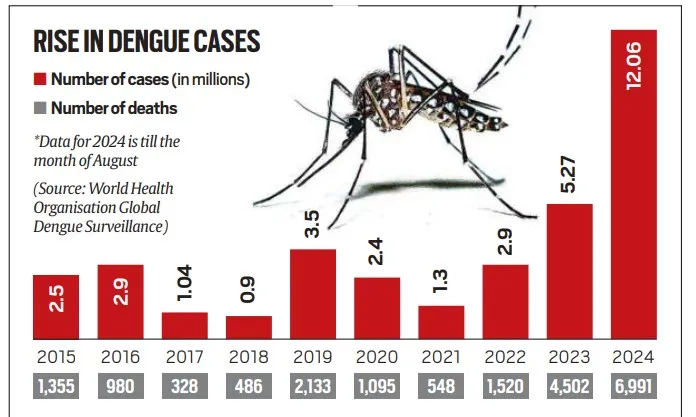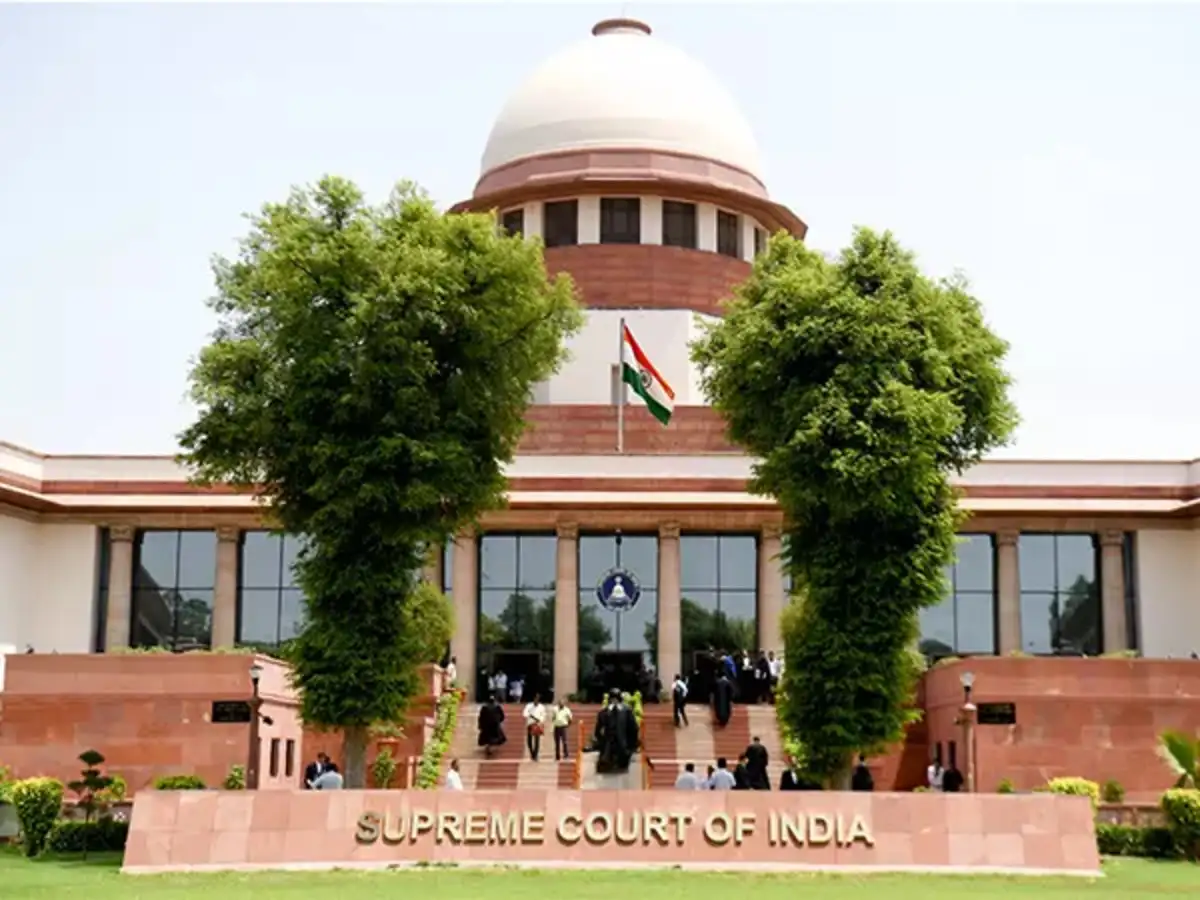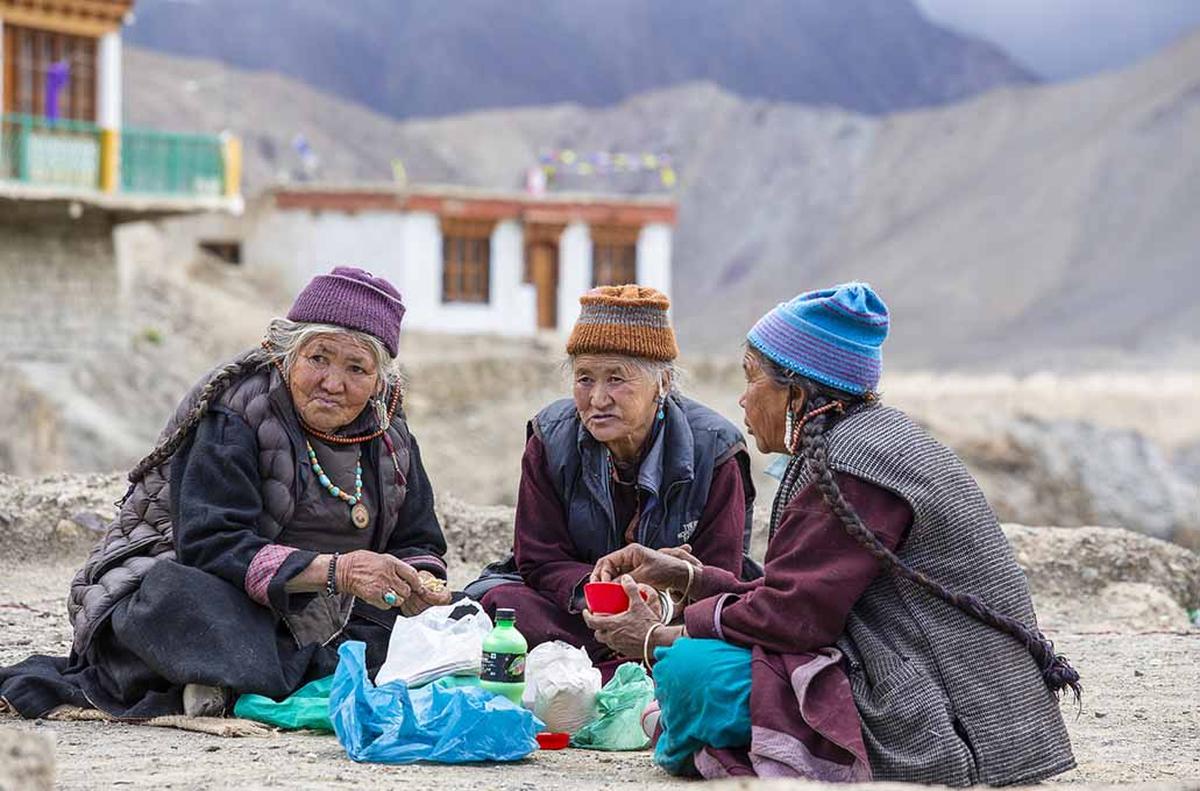- Courses
- GS Full Course 1 Year
- GS Full Course 2 Year
- GS Full Course 3 Year
- GS Full Course Till Selection
- MEP (Mains Enrichment Programme) Data, Facts
- Essay Target – 150+ Marks
- Online Program
- GS Recorded Course
- NCERT (Recorded 500+ Hours)
- Polity Recorded Course
- Geography Recorded Course
- Economy Recorded Course
- AMAC Recorded Course
- Modern India, Post Independence & World History
- Environment Recoded Course
- Governance Recoded Course
- Science & Tech. Recoded Course
- International Relations and Internal Security Recorded Course
- Disaster Management Module Course
- Ethics Recoded Course
- Current Affairs Recoded Course
- CSAT
- 5 LAYERED ARJUNA Mentorship
- Public Administration Optional
- ABOUT US
- OUR TOPPERS
- TEST SERIES
- FREE STUDY MATERIAL
- VIDEOS
- CONTACT US
Surge in Dengue Cases in 2024
Surge in Dengue Cases in 2024

Dengue cases have surged globally in 2024, with India reporting significant increases alongside other countries, particularly in South America. The World Health Organization (WHO) indicates this year’s numbers have already exceeded previous records. Understanding the disease, its transmission, and prevention strategies is critical.
What is Dengue?
- Dengue is a viral infection caused by the dengue virus and primarily transmitted by the Aedes aegypti mosquito.
- Dengue is caused by the dengue virus, which belongs to the Flavivirus genus. There are four distinct serotypes of the dengue virus:
-
DENV-1
-
DENV-2
-
DENV-3
-
DENV-4
-
Symptoms:
- Mild: Fever, severe headache, muscle and joint pains, nausea, vomiting, pain behind the eyes, and rashes.
- Severe: Can lead to internal bleeding, organ impairment, and potentially death.
Epidemiology: Over the last two decades, dengue cases have increased tenfold, marking it as the only infectious disease with rising annual mortality rates.
Global Situation

- Statistics: As of August 2024, there have been more than 12 million cases and 6,991 deaths reported worldwide, more than double last year's total of 5.27 million cases.
- Underreporting: Experts caution that these numbers may be underestimated due to incomplete reporting from various countries.
Dengue in India
- Current Data: By June 2024, India reported over 32,000 cases and 32 deaths. By early August, there was a reported 50% increase compared to the same period in 2023.
- Geographic Spread: Dengue has expanded from eight states in 2001 to affecting every state and Union Territory in India by 2022.
Factors Behind the Surge
- Urbanization: Urban areas provide breeding grounds for mosquitoes due to stagnant water collection. Increased rainfall and warm spells create ideal conditions for mosquito proliferation.
- Climate Change:
- Temperature Rise: Higher temperatures allow mosquitoes to thrive in previously unsuitable areas, including higher altitudes.
- Virus Transmission: Climate change enhances the robustness of the dengue virus, enabling better transmission and survival rates among mosquito populations.
- Movement of People: Global movement facilitates the spread of infections carried by individuals. Improved testing and reporting may also contribute to perceived increases in cases.
- Co-infections: Other vector-borne diseases, such as chikungunya and Zika, are also on the rise. There is a need to study whether infections reduce mosquito immunity, potentially increasing transmission rates.
Prevention Strategies
- Eliminate Breeding Sites: Prevent water accumulation in pots, planters, and bird baths to reduce mosquito breeding.
- Personal Protection: Wear long-sleeved clothing and use mosquito repellent, especially during the day when Aedes mosquitoes are most active.
Steps Taken by the Government to Combat Dengue:
- Inter-Ministerial Collaboration: Regular meetings involving the Urban Development Ministry and state officials to enhance dengue prevention and control efforts.
- Increased Surveillance: Implementation of disease and entomological surveillance to monitor dengue cases and vector populations.
- Hospital Preparedness: Ensuring availability of hospital resources, including platelets, to manage dengue cases effectively.
- Identification of Hotspots: Mapping and geotagging of dengue cases to focus preventive measures in high-risk areas.
- Public Health Campaigns: Initiatives like the "Safai Apnao, Beemari Bhagao Campaign" aimed at promoting cleanliness to reduce mosquito breeding sites.
- Training and Capacity Building: Training healthcare professionals on updated national guidelines for dengue case management to improve clinical responses.
- Expanded Sentinel Surveillance: Increasing the number of sentinel surveillance hospitals from 110 in 2007 to 848 in 2024 for better diagnosis and monitoring.
- Behavior Change Communication: Engaging communities through social mobilization and information, education, and communication (IEC) strategies to promote preventive measures.
- Vector Management: Environmental management and source reduction strategies to eliminate mosquito breeding grounds.
- Outbreak Response Plans: Developing and implementing epidemic preparedness and response strategies, including media management to raise awareness.
- Legislative Support: Enforcing regulations related to waste management and water storage to mitigate mosquito breeding.
- Monitoring and Supervision: Regular analysis of reports and field visits to assess the effectiveness of ongoing initiatives.
These steps aim to enhance overall preparedness and response to dengue outbreaks, particularly during the peak monsoon season.
Vaccines for Dengue:
Available Vaccines: WHO recommends two vaccines:
- Dengvaxia (Sanofi)
- QDenga (Takeda)
Status in India: These vaccines are not yet approved in India, although the country is developing its own vaccines in collaboration with international institutes. Notably:
- Serum Institute of India is advancing a vaccine using a genetically engineered weakened virus.
- Panacea Biotec is developing a similar candidate.
Conclusion:
The surge in dengue cases this year highlights the urgent need for preventive measures and better public health infrastructure. Understanding the interplay of urbanization, climate change, and human movement is crucial in managing and controlling the outbreak effectively. Vaccination efforts are also critical in combating this growing public health threat.
Must Check: Best IAS Coaching In Delhi
UPSC Prelims Result 2024 Out: Expected Cut Off & Other Details, UPSC Prelims 2024 Answer with Explanation, Daily Prelims Quiz, Daily Current Affairs, MONTHLY CURRENT AFFAIRS TOTAL (CAT) MAGAZINE, Best IAS Coaching Institute in Karol Bagh, Best IAS Coaching Institute in Delhi, Daily Mains Question Answer Practice, ENSURE IAS UPSC Toppers, UPSC Toppers Marksheet, Previous Year Interview Questions, UPSC Syllabus




